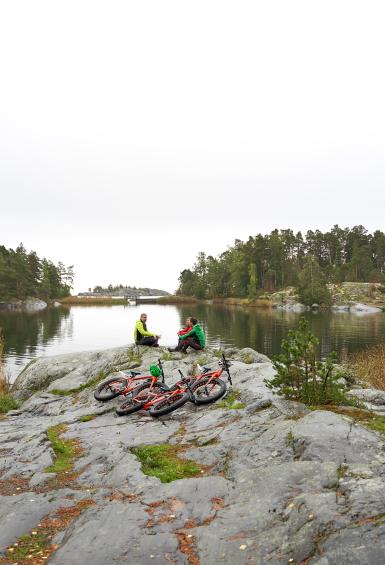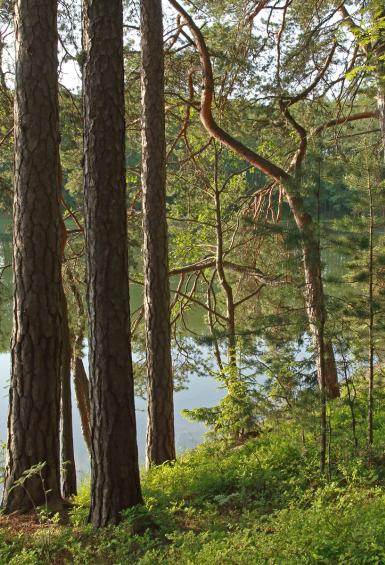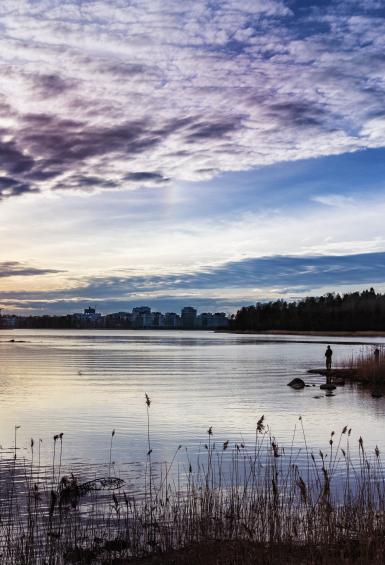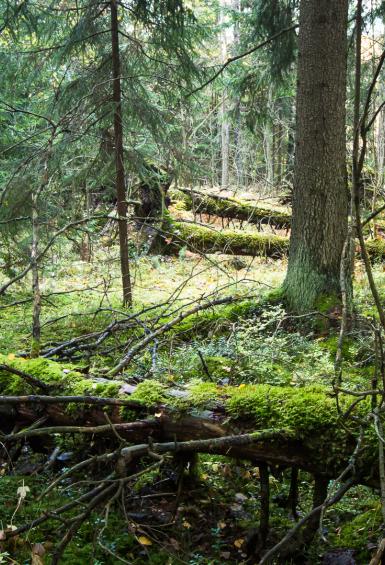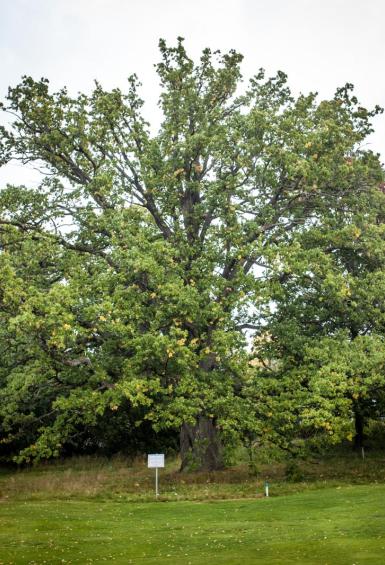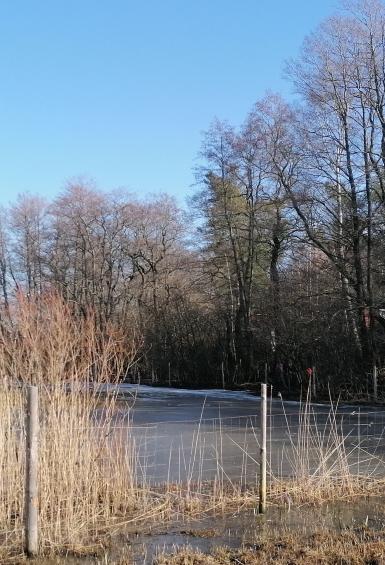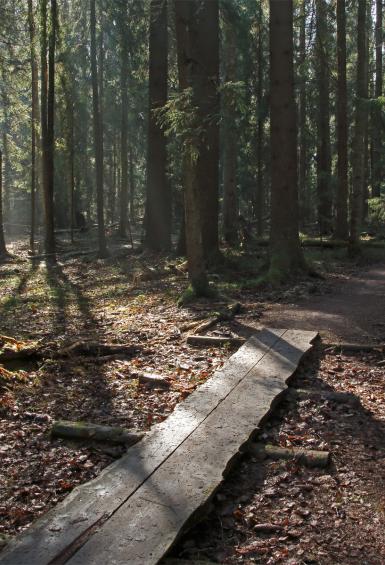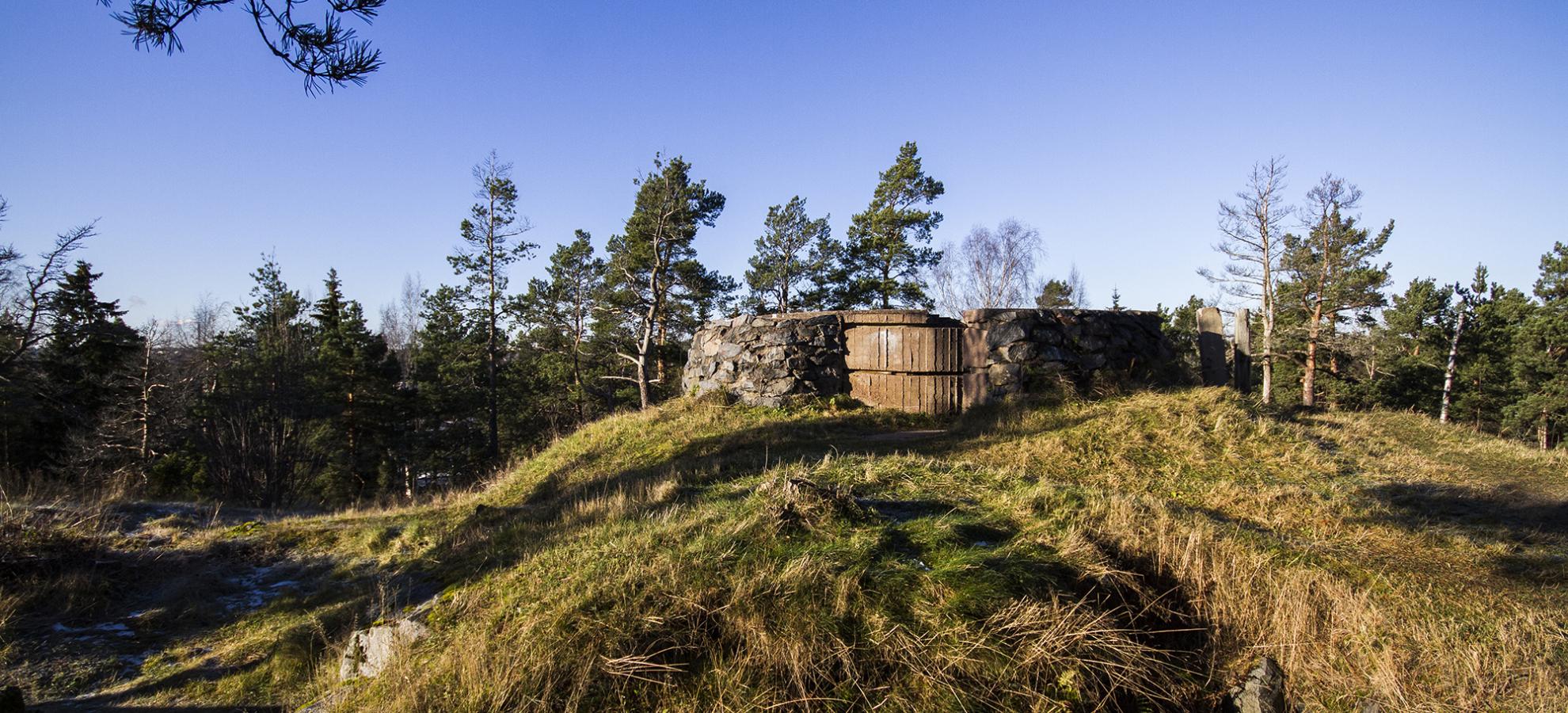
To defend Helsinki during the First World War, a chain of fortifications was constructed around the city. The new defensive lines were known as the Viapori mainland front after the sea fortress that had been constructed in previous centuries. At the outset of the Great War, Finland was still part of the Russian Empire, so the primary purpose of the mainland front was to protect St. Petersburg should German forces attack across the Finnish mainland. In addition, the Viapori sea fortress (Suomenlinna) off the coast of Helsinki was an important Russian naval base that had to be protected.
The new fortifications represented the biggest construction project in Finland during the 1910s, and workers were brought in from across the country. Even Chinese prisoners of war were put to work. The work was tough and occupational safety poor. Many workers were injured or died during the construction work.
The fortifications were mostly unused in the end, so they are still in good conditions and easy to explore. They were made protected landmarks in the 1970s. Similar intact fortifications can be found around the Estonian capital of Tallinn. The fighting elsewhere in Europe was much more intense, making it harder to find such well-preserved fortifications from the First World War.
Paloheinä
The Nuotiopuisto park in the Paloheinä district is one of the best places for exploring First World War fortifications, as they were fully excavated between 1997 and 2000 and are well maintained. Access along the stone and concrete reinforced trenches is extremely easy. The fortifications in the park include bunkers, machine gun nests, a searchlight installation and an observation station. You can read about the history of the fortifications on information boards, and the park is also suitable for kids.
How to get there: Take bus number 66 from the Central Railway Station to Paloheinä. Get off at Paloheinäntie. Nuotiopuisto is on the right side of the road behind the houses.
Pajamäki
Patterimäki (“Battery Hill”) in Pajamäki is a rocky outcrop where fortifications were constructed in all directions. You can walk along the trenches, especially in spring and autumn when they are not covered by vegetation. There are also bunkers on the hill, at least one of which is still accessible. The roofs of most bunkers were destroyed between the 1950s and 1970s to prevent vagrants from using them as accommodation.
An anti-aircraft battery was also located on top of the hill during the Second World War to protect Helsinki against air raids. The outer walls of the battery can still be seen. The Pajamäki district was home to legendary Finnish homoerotic artist Tom of Finland. Pitäjänmäki train station is located at the base of the hill, and government formation talks in 1944 were held in a train there protected by the battery.
How to get there: Take the A train to Pitäjänmäki. Walk south across the bridge and you will be at the base of the Patterimäki hill.
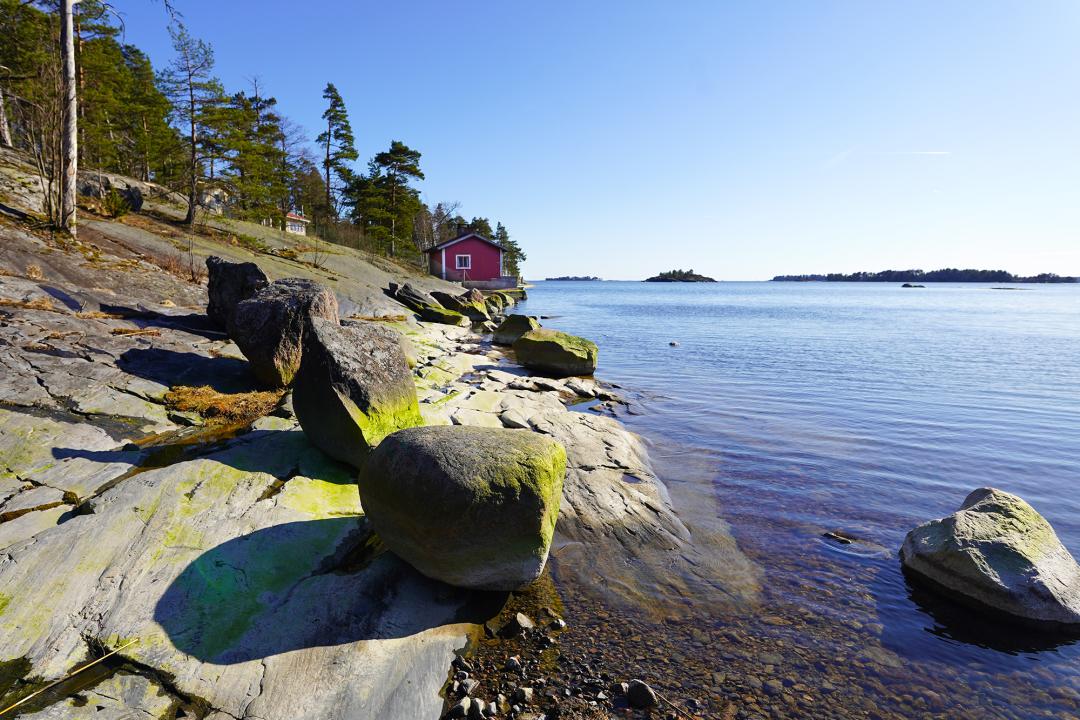
Skatanniemi
The fortifications at Skatanniemi are the only mainland stronghold that was part of the original Viapori maritime front, as the other strongholds are in the archipelago. The fortifications can be found in the Uutela recreational area, which has lots of nature trails and grilling areas. The fortifications were constructed in 1916 and include storehouses, bunkers and four artillery emplacements for protecting the sea to the east of Helsinki.
The fortifications in the archipelago have been largely inaccessible, as many of them are still situated in military zones. In addition to Skatanniemi, however, you can also find fortifications on the islands of Isosaari and Pihlajasaari.
How to get there: Take bus number 90 from the Vuosaari metro station to Aurinkotuulenkatu and then walk around 2 kilometres down Uutelantie. The fortifications can be found alongside Skatanniementie.
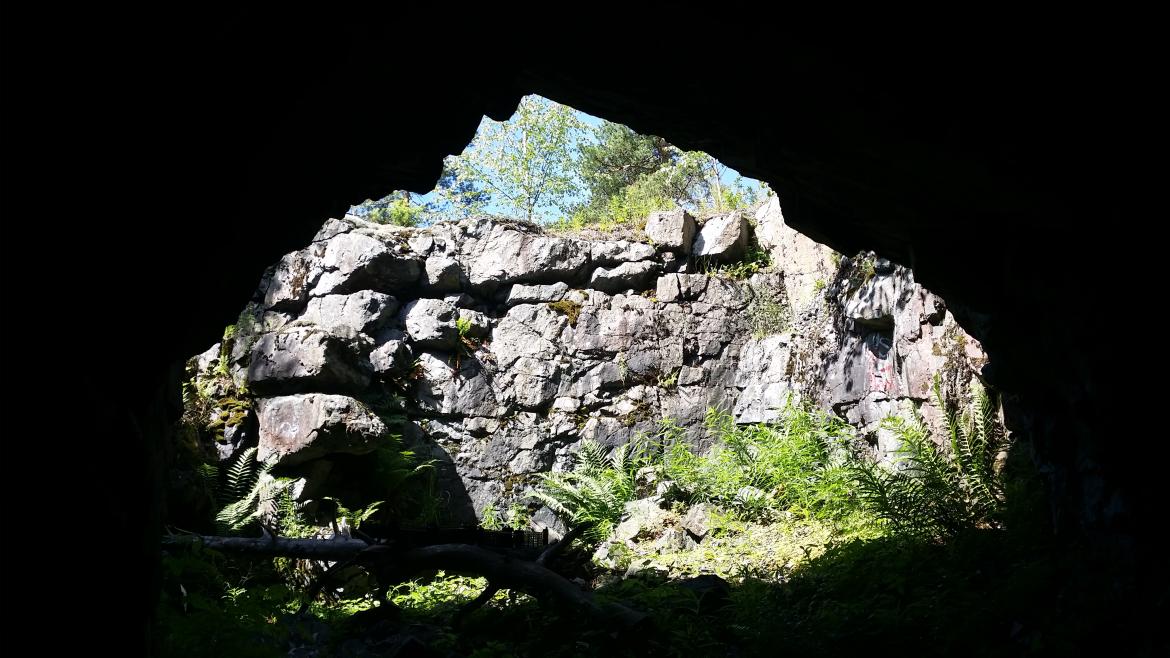
Mustavuori
Mustavuori in the Vuosaari district is the easternmost stronghold along the Viapori mainland front. It is also the best place to explore the caves that were excavated along the front, most of which were never completed. However, for safety reasons, the fortifications of Mustavuori should be admired from the viewing distance - there is a risk of boulders falling in the caves and also in some deep parts of the trenches. No new barriers have been built in the area, as the sites are protected relics.
On the west side of the Mustavuori hill you will find a deep gorge with two caves at the bottom (GPS coordinates: 60.237866, 25.138684). It’s an impressive sight, although the caves are often covered by water. There is another cave on the side of the hill that is open at both ends (60.235922, 25.142870). The caves were used to protect soldiers and equipment.
You can also find long lines of trenches around the hill, but they are hard to explore due to the difficult terrain. There is also an old artillery road that was used to transport equipment to the base.
How to get there: Take bus number 818 from the Mellunmäki metro station to Kallvikintie. Mustavuori is on the east side of the road. Use the GPS coordinates given above to pinpoint the locations.
Munkkiniemi
In addition to trenches to gun nests, the Viapori mainland fortifications also include artillery batteries. Remnants of these can still be found in the Myllypuro and Koskela districts, but the best place to see them is in Gert Skytte Park in Munkkiniemi. Constructed in 1916, the battery includes two artillery emplacements, and the guns had a range of 25 kilometres. Construction of the artillery batteries in Helsinki was never fully completed, but the battery in Munkkiniemi is the most complete. Two caves were excavated in the granite beneath the battery for soldiers and ammunition. One of these caves has collapse and the other is off limits.
On top of the hill you will find an artillery piece from the Second World War that commemorates the anti-aircraft battery that was located there.
How to get there: Take tram number 4 to the last stop in Munkkiniemi. Walk south along Uimarinpolku and then climb up the rocks behind the Finnish State Guest House. The battery can be found between Kalastajatorpantie and Kärkitie. The battery is not signposted but is easy to find.


